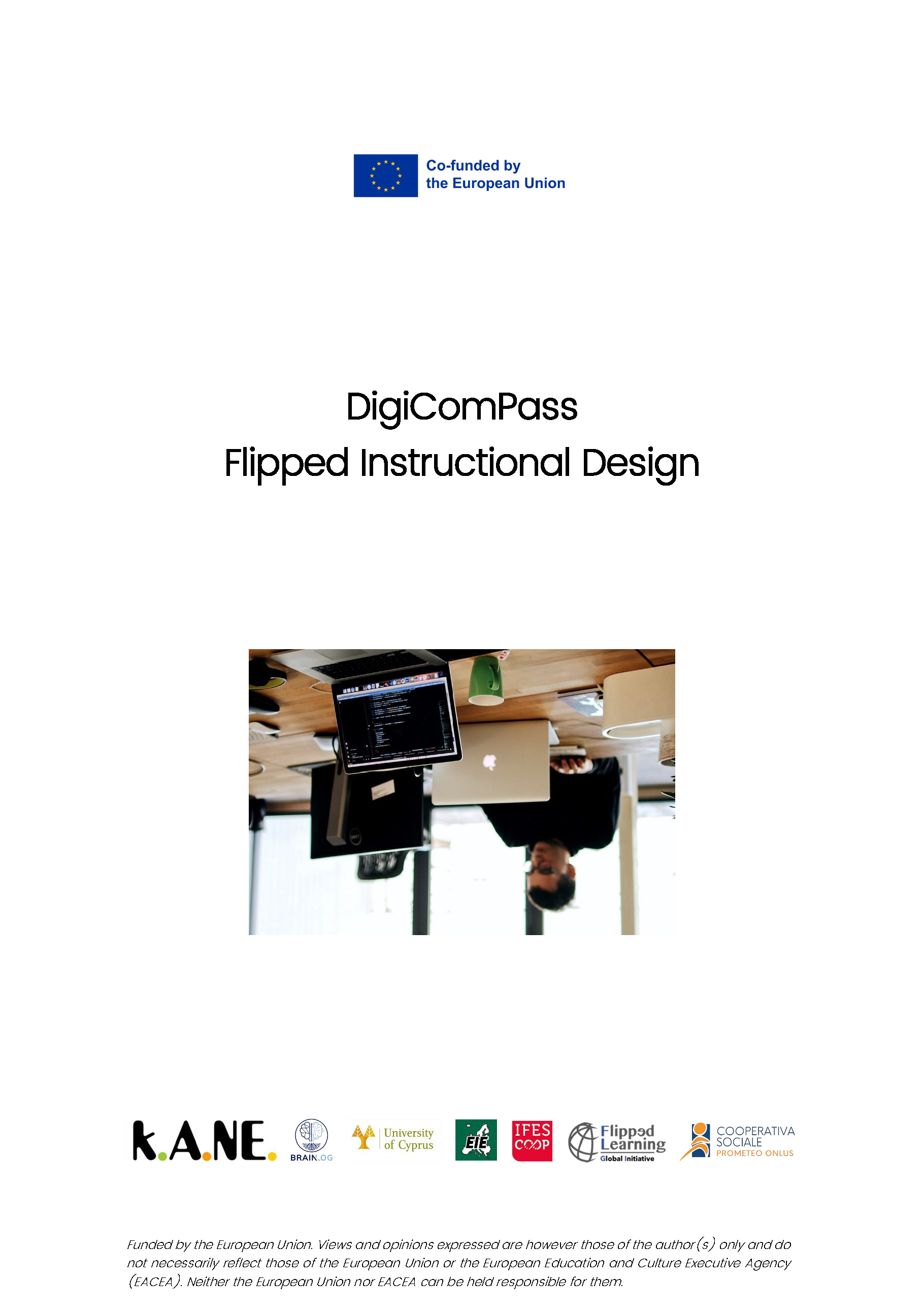
The cover of the “Flipped Instructional Design” is one of the most downloaded results of the project.
The Flipped Instructional Design (FID), based on the Flipped Learning 3.0 Framework, introduces a student-centred approach that transforms traditional teaching methods by shifting content delivery outside the classroom. This model enables learners to engage with materials at their own pace through digital resources, while classroom time is dedicated to interactive, hands-on activities that deepen understanding and application. Educators take on the role of facilitators, guiding students in collaborative and individual learning experiences. With continuous assessment and a flexible learning environment, the approach ensures personalised learning and active engagement.
The current version (4.0, July 2023) comprehensively covers all aspects of instructional design and has been widely recognised as a valuable resource. The document has been downloaded over 300 times in German, over 130 times in English, and over 100 times in Italian, demonstrating its relevance and impact across different educational contexts.
About the Document
The Flipped Instructional Design (FID) document provides a structured guide to planning and delivering practical training using the Flipped Learning 3.0 approach. It covers key principles, course development strategies, training methods, and learner support. Below is an overview of its content:
1. Introduction
This section explains the basic principles of instructional design and its importance in education. It introduces key concepts such as pedagogy and andragogy, the role of instructional design, and clear roles for all stakeholders. It also presents Backwards Design as a planning approach and highlights the use of Bloom’s Taxonomy to set learning objectives.
2. Analysis
This chapter focuses on understanding learner needs and identifying the goals and challenges of training programs.
3. Learning Objectives
A guide to defining clear learning goals, ensuring that all training activities are aligned with the desired outcomes.
4. Curriculum and Course Structure
Explains how to design a well-structured curriculum and organise courses effectively. It includes a Training Content Framework, presented in text and table format, to help trainers plan their courses systematically.
5. Training Methods
Covers different teaching approaches used in Flipped Learning 3.0. It explains how to engage learners actively in both the individual learning space (self-paced learning) and the group learning space (collaborative learning).
6. Training Material
Details the types of resources used in Flipped Learning, distinguishing between those suited for individual learning (e.g., videos, interactive content) and group learning (e.g., discussions, collaborative tasks).
7. Assessment Methods
Explores different ways to assess learners, including formative and summative assessments, as well as self-evaluation methods.
8. Implementation
A practical guide on how to apply Flipped Learning 3.0 in real training environments, including technical and pedagogical considerations.
9. Evaluation
Describes how to measure the success of a training program. It includes strategies for quality enhancement, such as Quality Circles, which ensure continuous improvement.
10. Learner Support
Focuses on ensuring accessibility and inclusivity in training. It covers inclusive support strategies, technical assistance, study aids, and peer support to create a supportive learning environment.
11. Glossary & Appendix
Provides key definitions, educational models, and checklists to support trainers in implementing Flipped Learning standards. It also introduces concepts like Interactive Video and Universal Design for Learning.
This document serves as a comprehensive guide for trainers implementing Flipped Learning 3.0. It combines structured course planning, active learning methods, inclusive support, and continuous evaluation to ensure high-quality and effective training experiences.
